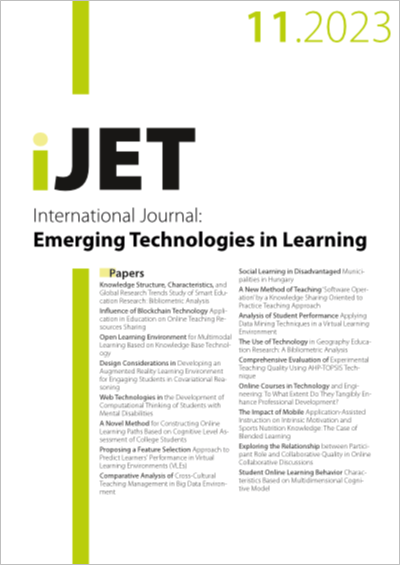Web Technologies in the Development of Computational Thinking of Students with Mental Disabilities
DOI:
https://doi.org/10.3991/ijet.v18i11.38653Keywords:
web technologies, web 3.0, computational thinking, online education, students with mental disabilities, errorless learning, inclusive pedagogyAbstract
Computational thinking is an important and necessary part of a modern person’s thinking. It has been proven that the development of this way of thinking in students with mental disabilities allows them to navigate quickly in the modern world, identify problems and create complex solutions. Online schooling during the COVID-19 pandemic demonstrated the possibilities of the usage of web technologies in the education of children with mental disabilities. This study aims to evaluate the impact of web technologies on the development of computational thinking of students with mental disorders. The experiment involved 14 students aged 8-12 and 4 tutors. For 8 weeks children were trained in computational thinking and computer science. Assessment of computational thinking was performed with cCT-test by El-Hamamsi et al. before and after the experiment. After conducting computer science lessons using web technologies the respondents showed a higher level of computational thinking (M=15,7, SD=3,69), compared to the results of preliminary testing (M=5,93, SD=2,3). Web technologies can significantly increase the effectiveness of inclusive pedagogy, which establishes the importance of integrating web technologies into the teaching system in inclusive classes of general education schools.
Downloads
Published
How to Cite
Issue
Section
License
Copyright (c) 2023 Dr. Almagul Zh. Assainova, Dr. Dariya B. Abykenova, Zhanara T. Aubakirova, Dr. Kymbatsha M. Mukhamediyeva, Kymbat A. Kozhageldinova

This work is licensed under a Creative Commons Attribution 4.0 International License.


